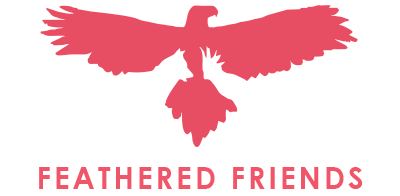HAWKERS PROGRAM
The Feathered Friends Hawkers Program exploded from what started as a Rehabilitation Site for the release of wild birds of prey, rescued largely from suburban trauma. Bypassing members of the public interested in the rehabilitation process were often invited to watch and with every successful release, the word got out. With every unsuccessful release, brought on the question of what happens now?
The New South Wales Government Code Of Practice for Sick, Injured and Orphaned Birds Of Prey, unfortunately mandates the first management response to any bird of prey considered to be a “nuisance” or unfit for release, is to euthanise. It is extremely difficult to accommodate the volume of injured birds classed as unsuitable for wild release, and so in many cases euthanasia is the humane decision. Limited facilities available for the proper care of rescued birds of prey in New South Wales is why Feathered Friends founder Ravi Wasan drafted the Hawkers Program as a new purpose for these Australian raptors, to join the Program as Ambassador Species that educate visitors about avian protection and conservation.
Set in Western Sydney’s open grasslands, guests have the opportunity to go Hawking, and explore the natural habitat of Australia’s most remarkable birds of prey. Experience the magic with an experienced Handler as they let their bird soar free amongst our guests. Guests are presented with their own glove, and are guided on how to call and fly the birds themselves. Admire these spectacular aerial acrobats as they slice through the skies of their territory.
Birds of prey regularly come into care due to the impacts associated with living around urban environments. Car trauma, starvation, disease associated with stress, ingestion of plastic products, fishing lines, power line injuries, and secondary poisoning from best baiting – these are the more regular reasons for birds of prey arriving into the facilities specialist care program.
Suitable birds that join the facilities Hawkers Program undergo a carefully mapped program that is individually specific to support each bird’s ability to bond with their Handlers. The bond is key. Without it, the birds are not able to rely on the care and support from their Handler. This process can take months to achieve.

Once the bond is secured, the re-wilding begins. Building confidence and muscle mass is an extensive process and is an important step in each bird’s rehabilitation. Once the bird is flying confidently to the handler’s arm consistently, they are ready for the next level in their training: exploratory flight lessons. During this stage, birds are transitioned to the Hawking Reserve. The Hawking Reserve is a unique environment specifically designed for Birds of Prey. Twenty acres of natural habitat has been preserved for the birds to enjoy freely each day. Open grasslands, roosting opportunities to overlook the reserve, marshlands, creek lines and eucalypt groves are the main areas the hawks enjoy exploring.
Gentle training and soft exposure have concreted a natural fascination for the birds to enjoy the benefits of visitors. For guests, it’s an overwhelming moment when an owl, hawk or eagle swoops effortlessly onto their hand, a rare and intimate moment shared. For the crew and the birds in their care, it is freedom and gratitude for survivorship.
The Hawking Program is not government funded. Without government funding, the project’s longevity is not sustainable. The Program is an initiative of the Sanctuary’s ongoing efforts to preserve protected birdlife in their wild habitat. To ensure the Program remains available, the Hawking Reserve required public visitation, and the unique ability for visitors to experience flying a wild hawk is now the one reason the Feathered Friends Sanctuary and Reserve can exist.
Meet our Hawker’s Program Ambassador Bird Species:
